The natural world is extremely cutthroat; it’s surprising there are any animals out there with no natural predators. Humans are one of them. Though without our intelligence, we are no match for many animals on this list.
Some creatures aren’t as top-of-the-food chain as you might believe (we’re looking at you, great white shark). Others might come as a complete surprise! Read on to learn about 11 animals that are at the top of their food chain.
1. Komodo Dragon
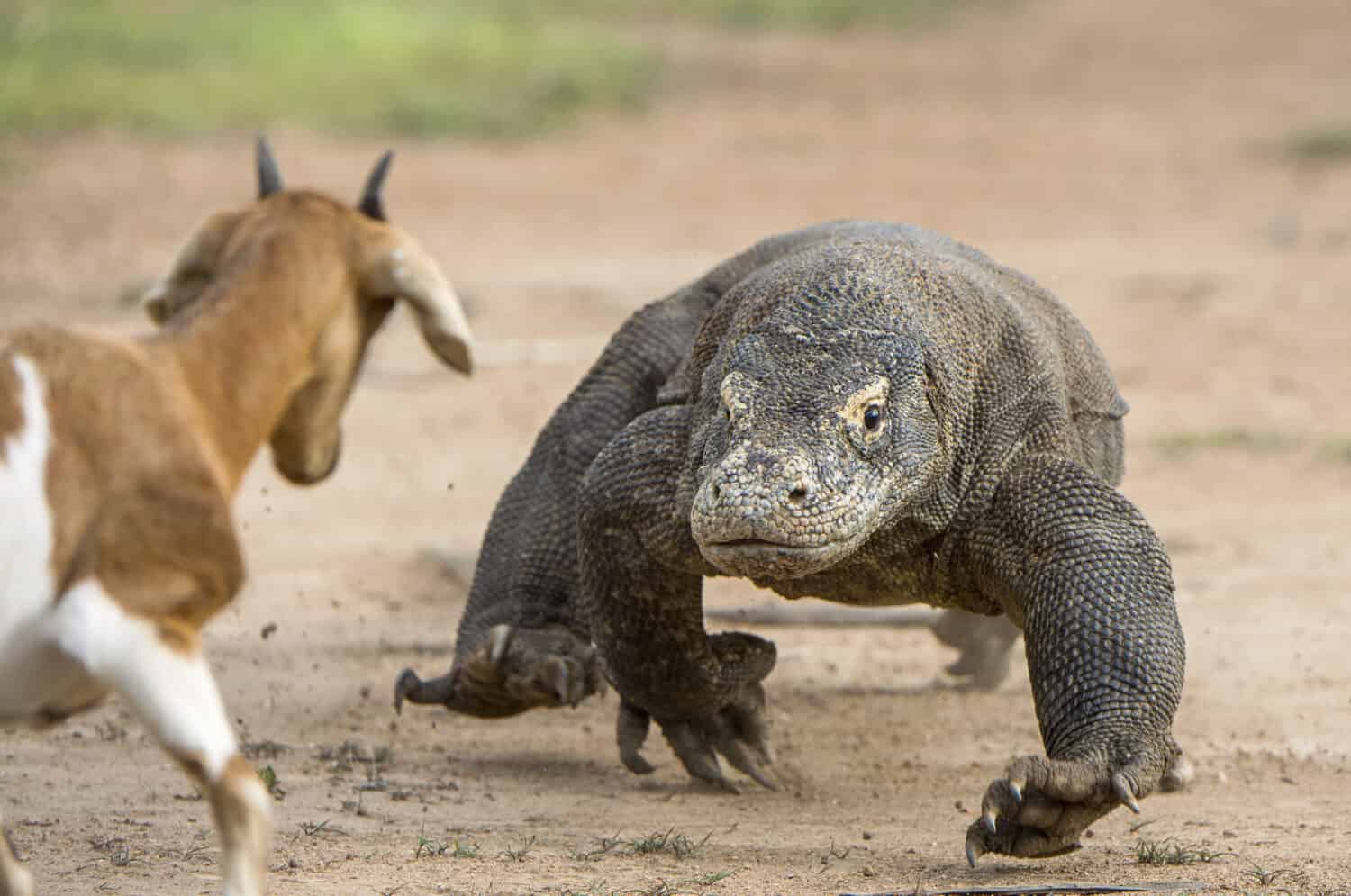
Komodo dragons were cryptids; their existence was speculated, but not yet proven until 1910.
©Sergey Uryadnikov/Shutterstock.com
The only predators a Komodo dragon (Varanus komodoensis) has to worry about are other Komodo dragons. They can grow to be 10 feet long with over 60 razor-sharp teeth. Komodo dragons also have venom. However, since this species is immune to its own venom, they cannot be killed by another dragon’s bite. Juvenile dragons, however, are in danger of being eaten by adults. To defend against this, they will often roll around in feces to make themselves unappetizing!
2. Nile Crocodile

The average Nile
crocodile
is 16 feet long.
©Mari Swanepoel/Shutterstock.com
These crocodiles are native to tropical areas of Africa and Madagascar. Their ferocity, size, and indiscriminate palate make them a predator that no other animal wants to mess with. Nile crocodiles (Crocodylus niloticus) mostly sustain themselves on fish, which is around 70% of their diet. Other common prey are hippos, wildebeests, and zebras.
3. Orca
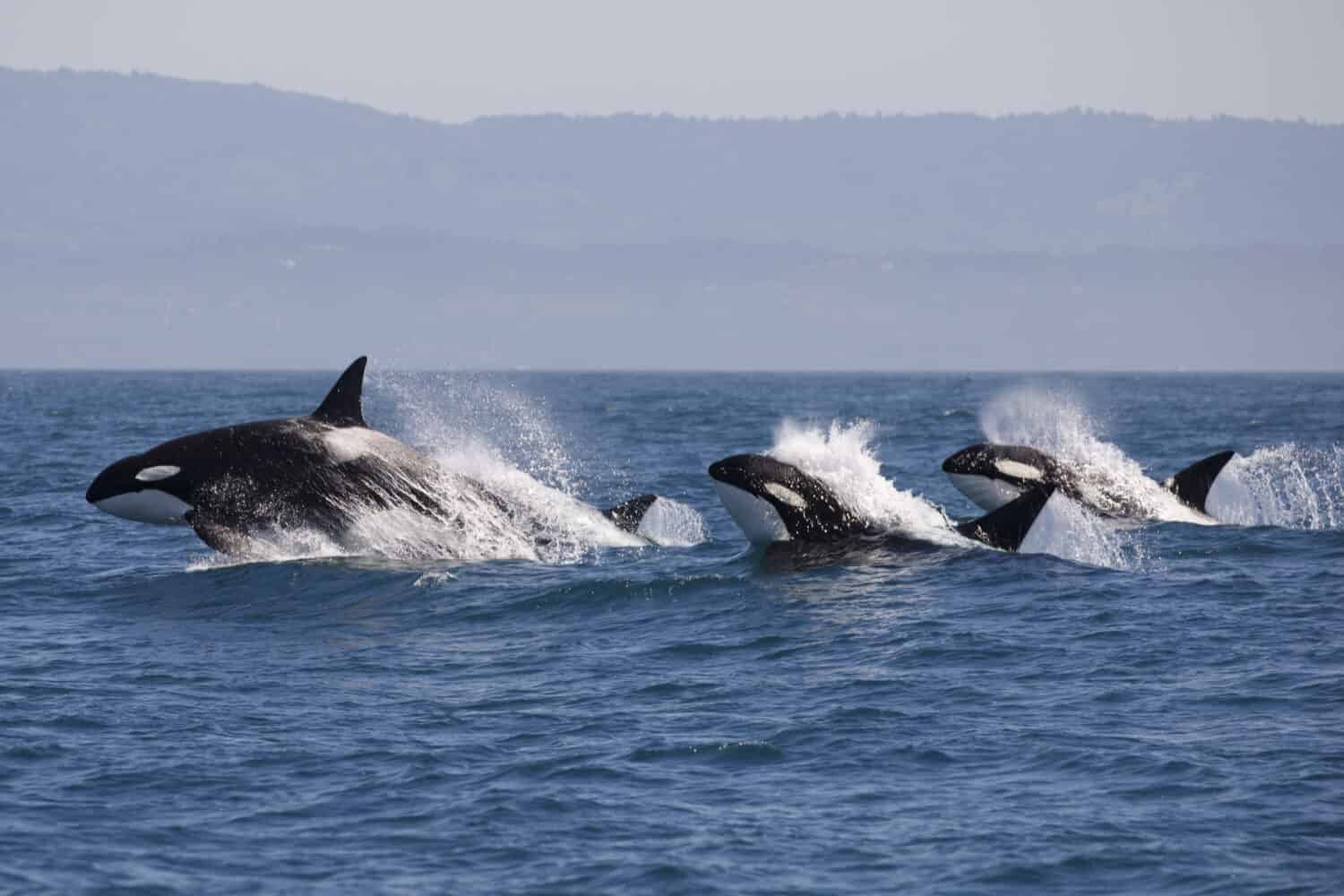
Though
great white sharks
are apex predators, killer whales are their only natural predators.
©Tory Kallman/Shutterstock.com
Orcas (Orcinus orca), more commonly referred to as killer whales, dominate the sea. With coordinated efforts, they can take out large creatures like sperm whales without much trouble. They are not afraid to kill sharks and remove their livers to retrieve the most nutrient-dense portion of the animal. Adult orcas can eat up to 300 pounds in a single day! So, they must have the drive to seek out that much food to survive. It makes sense they’d target larger prey like whales and sharks to meet their daily calorie quota.
4. Polar Bear

Female polar bears can go up to eight months without food while caring for newborn cubs.
©iStock.com/Alexey_Seafarer
Like the Komodo dragon, the only predator polar bears (Ursus maritimus) have to worry about are other polar bears. They are the largest species of bear at over 8 feet long and primarily feed upon seals. Unfortunately, due to human hunting and climate change, their numbers in the wild are drastically decreasing.
5. Lion
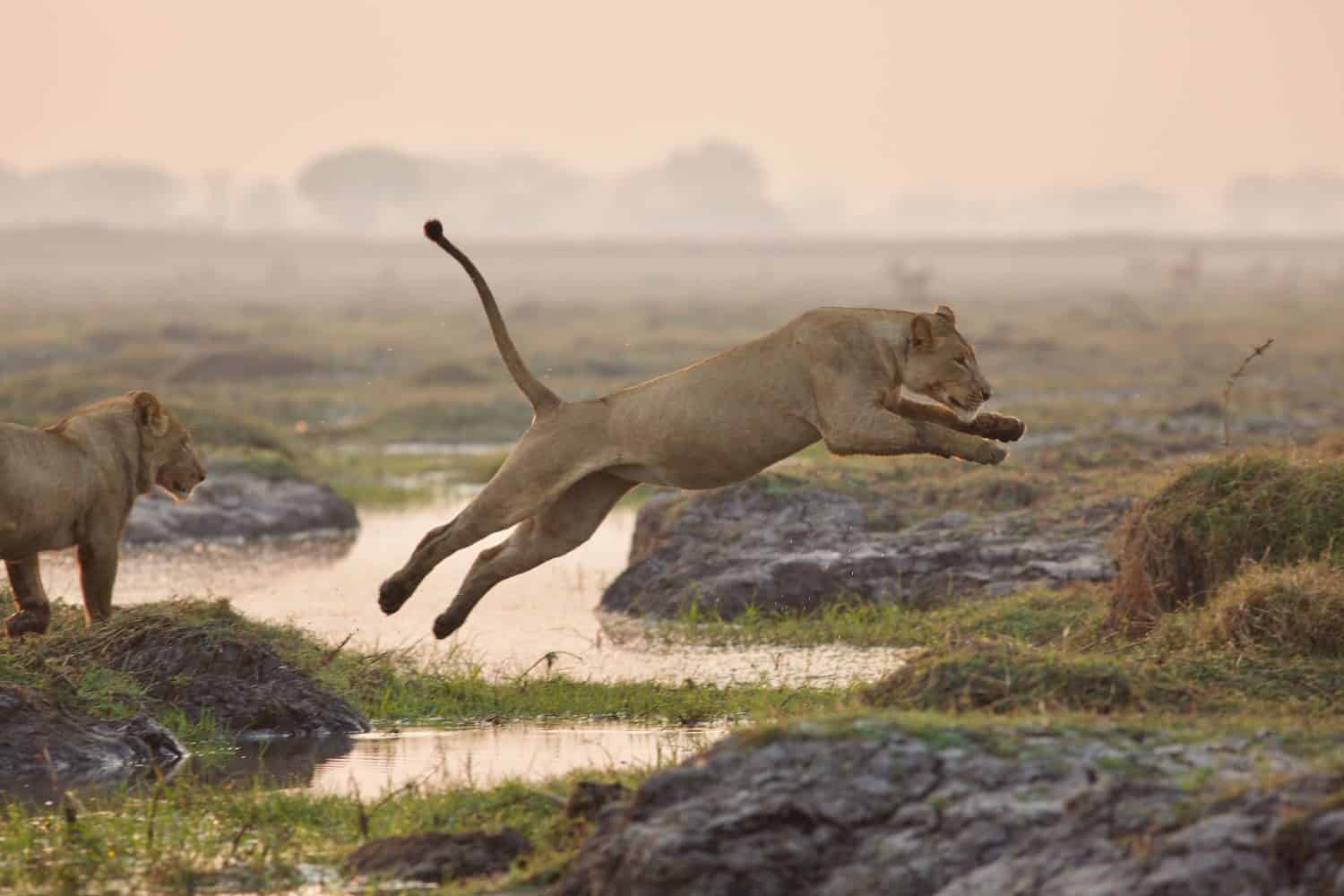
Contrary to popular belief, female lions do the majority of the hunting for their pride.
©Foto Mous/Shutterstock.com
Lions (Panthera leo) are truly the kings and queens of their domain. They can swim, climb trees, and run up to 50 miles per hour in short bursts to catch prey. Lions have a vast diet, which mostly consists of large kills like zebras or giraffes. However, if large prey is scarce, they’ll resort to eating smaller mammals or even reptiles. Sometimes they will venture into nearby villages to kill livestock, though this can end in the lion’s death if caught or hunted by the livestock owner.
6. American Alligator

The American alligator has a small range, but it is an apex predator in its habitat.
©Jim Schwabel/Shutterstock.com
American alligators (Alligator mississippiensis) are impressive carnivores that can find prey equally as well on land as they can in the water. The lack of natural predators for these animals can be attributed to their success in hunting, as well as their armored bodies that make them very difficult for other animals to hunt and kill. Alligators will eat anything they can, for the most part. As opportunistic hunters, this means they might eat birds, turtles, fish, or even dogs that make the unfortunate mistake of crossing this beast’s path.
7. Rhinos
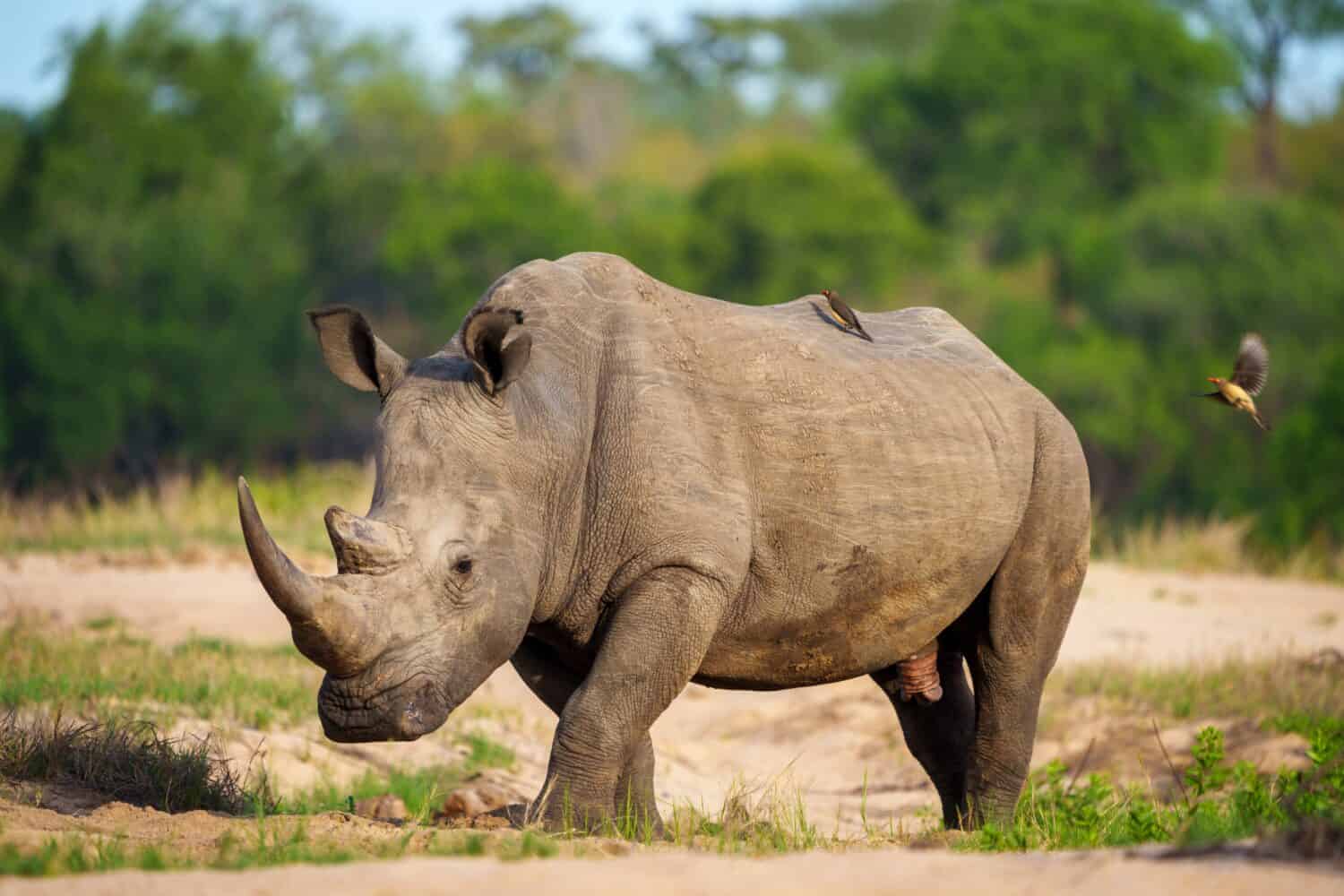
White rhinos are the largest of the five species of rhinoceros.
©Roger de la Harpe/Shutterstock.com
Both white and black rhinos (Ceratotherium simum and Diceros bicornis, respectively) lack natural predators in the wild. For an herbivorous animal, it might be surprising they have no natural predators. Their biggest concern is humans, who hunt them for their horns. But the story is a bit different for young rhinos. The babies, due to their smaller size and slower nature, are often targets of large cats. A group of larger carnivores might be able to take out a rhino, but their strength and size make them a formidable opponent.
8. Grizzly Bear
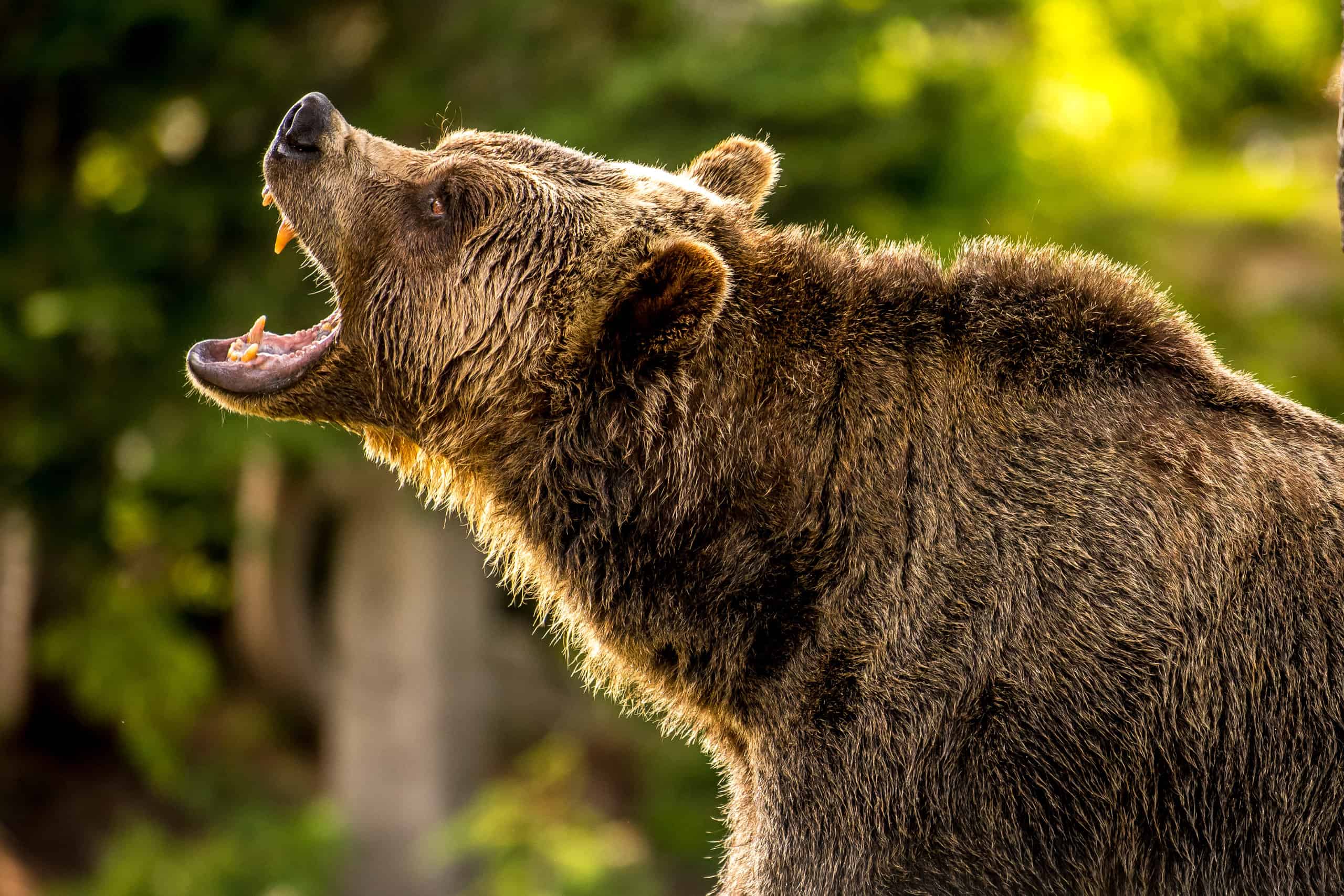
Grizzly bears can reach up to 35 miles per hour, though this is in short bursts.
©toseeg/Shutterstock.com
It’s not entirely a shock that there are two species of bear on this list, with the grizzly bear (Ursus arctos horribilis) being one that also does not have any natural predators. These bears often compete with mountain lions and wolves for food, which means they do sometimes cross each other’s paths. However, it is not usually a deadly encounter for the bear unless cubs are present. The cubs are usually the ones who become prey to mountain lions, though some grizzlies will not turn down their own kind as a meal. Grizzlies are not strictly carnivorous. They enjoy a medley of foods such as elk meat, berries, salmon, and grasses.
9. Great Horned Owl
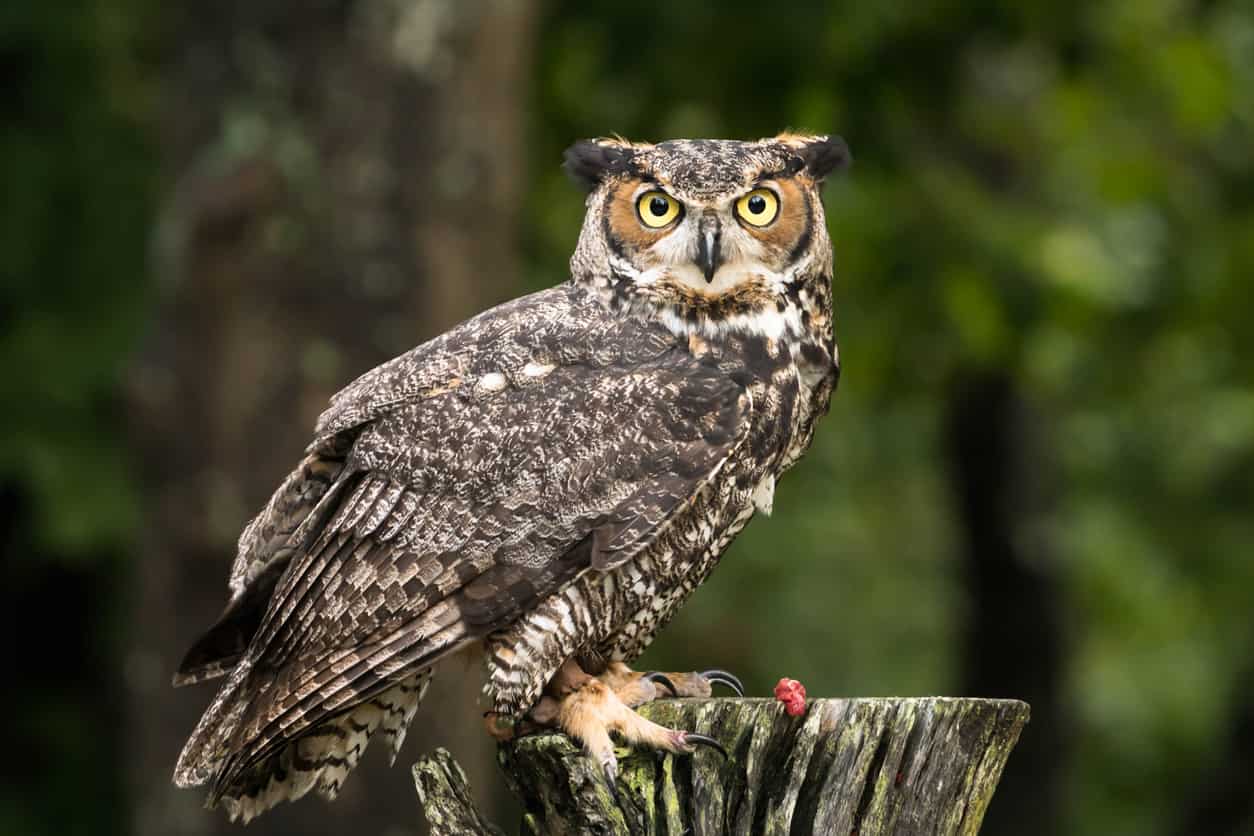
Great horned owls are protected in many countries.
©iStock.com/makasana
Even though the great horned owl weighs under four pounds at its largest, this bird rarely becomes another animal’s meal. While their eggs and young are susceptible to other birds or predators, adult great horned owls (Bubo virginianus) are more at risk of death by humans or human activity than any animal in its environment. This species of bird is incredibly effective at hunting and is not a picky eater. They will eat insects, small mammals, reptiles, and sometimes, other birds.
10. Bald Eagle
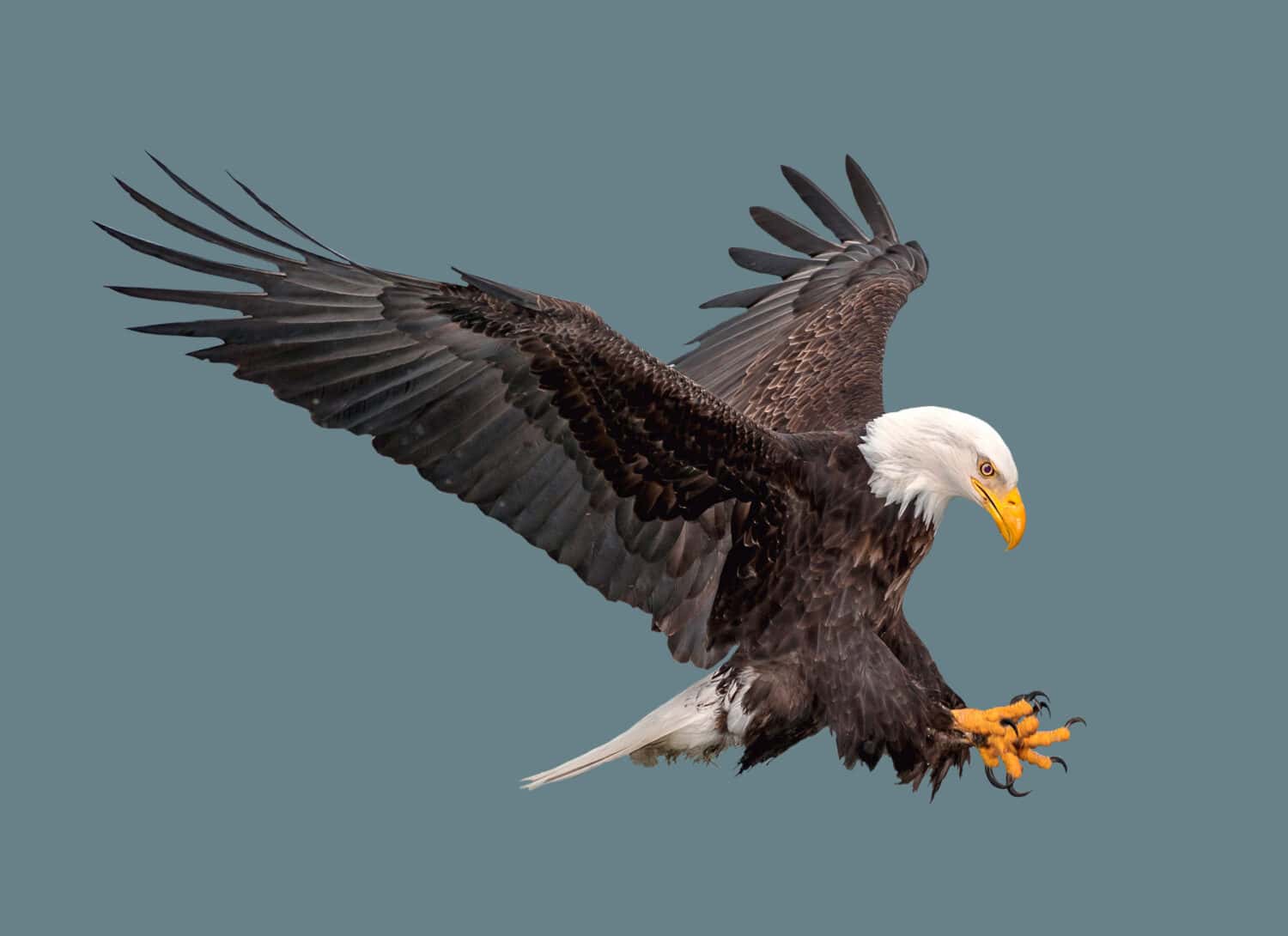
Bald eagles are the national bird of the U.S. They represent strength and independence.
©PHOTOOBJECT/Shutterstock.com
Like the great horned owl, the bald eagle (Haliaeetus leucocephalus) is another raptor species that is an apex predator in its kingdom. They’re extremely savvy birds, sometimes hunting with another to help flush out prey. This bird usually hunts for fish and other sea animals, like waterfowl and turtles. Additionally, they’re not above stealing other’s hard-earned catches. Fishermen have fallen victim to the eagle’s thievery, with instances of eagles swooping in for their catch of the day.
Electric Eel

Electric eels are not true eels and are instead members of the knife fish family.
©Danny Ye/Shutterstock.com
Electric eels (Electrophorus electricus), though essentially blind and mostly confined to caves or muddy waters, don’t have much in the way of predators. They’re not really on many animals’ menu considering they can generate up to 600 volts of electricity! Due to this, no would-be-predator seems to want to challenge this electrifying fish. Electric eels mostly feed on crustaceans and small invertebrates.
The photo featured at the top of this post is © Tory Kallman/Shutterstock.com
Thank you for reading! Have some feedback for us? Contact the AZ Animals editorial team.






